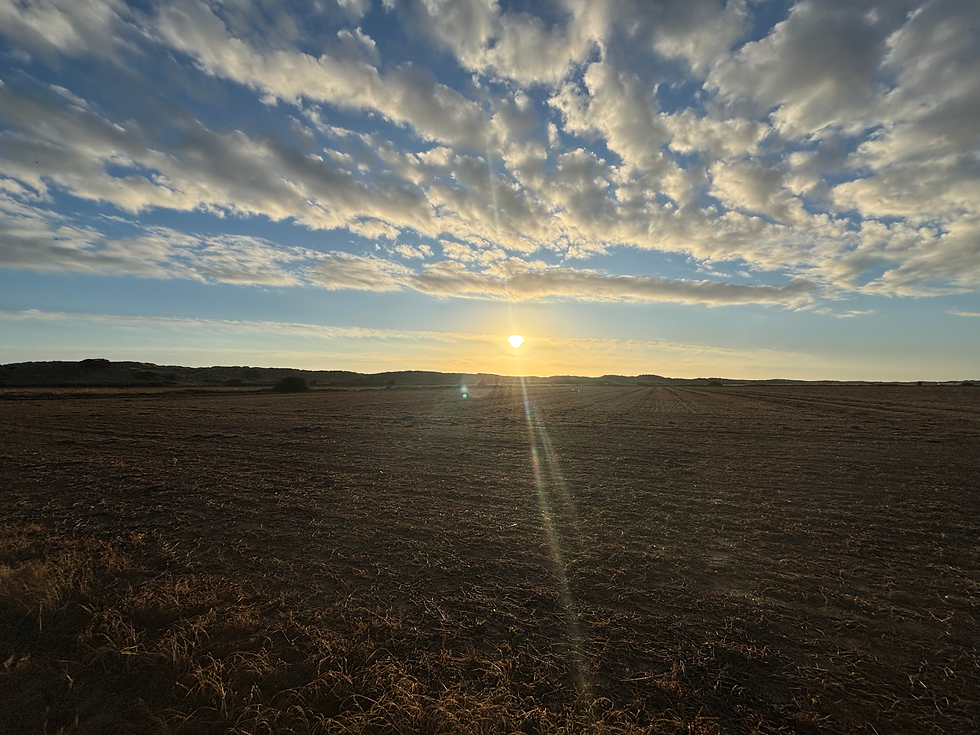Whiter than white...
- tg42lowcarbonbirding
- Sep 27, 2024
- 3 min read
Sabine’s Gull, juvenile, Sep 27, T. E. Allwood

The forecast for this morning was strong winds and rain from around 0600. I woke early and readied myself for an early start. Except it seemed completely still outside. There was no rain and the leaves and branches weren’t even moving. I headed up to the seawatch spot, getting soaked from the night’s rain as I made my way through along the path. I settled in, put the scope up, and positioned the Perspex to stop the wind, allowing me a good view at anything from straight out and to the south.
The first 30 minutes after sunrise were total deflation. Nothing was moving and there was no wind to speak of. I was even wondering about heading back home and having a coffee. Then I got a WhatsApp from a mate further north reporting that the wind was seriously strong and birds were starting to pass. A bit of patience was perhaps in order… then at around 0715 the marram grass began to move. What I wasn’t expecting was that within no more than a minute tops, the conditions metamorphosed from pretty calm to raging wind and rough seas. And almost at the exact same time, the first two skuas appeared, blitzing south. No chance to do much with them. Then two more, which were similarly rocketing through, giving no chance to get anything much on plumage.
It was no more than a few short minutes after the wind picked up that I got onto something interesting just behind the reef, only a few hundred metres away. A flash of the brightest white and then a view of black in the outer wing. Surely another Sabine’s? I focussed on the bird and quickly confirmed the large, pristinely white triangles in the rear of the wing. I then checked for any black bar across the coverts bordering the white triangle of the secondaries and inner primaries. There was none! A look at the mantle and wing coverts showed them to be a nice mid-brown, contrasting sharply with the white in the wing and the black outer primaries. The bird was a juvenile Sabine’s Gull, only a couple of weeks after I found one at around the same time and place.
The bird looked quite assured despite the high winds. Its wings were broad giving it a stocky sort of appearance. The tail had a black terminal bar but I was unable to discern a tail fork on the views I was getting. As the tide was out, the reef was pretty much exposed at its base, meaning that the bird was only just over the sea. As a result, views were superb. At one point, as the bird lifted its left wing, it was possible to see the dark ‘shadow’ marks on the underwing. The head was typically dingy-brown, similar to the mantle and upperwing covs.
Sabs Gulls are just superb birds. Rare, often encountered in difficult conditions and quite spectacular to look at. The views given by this individual certainly ticked those boxes. I recalled finding one in my first year here - on this exact date in 2007, so there was a nice circularity to this sighting. The best thing about seawatching alone or with one other person, is that the birds you find are all yours. You aren’t relying on others to find the bird and you aren’t relying on others to identify the bird. And to find them on your local patch, so close to home, is simply unbeatable. The excitement and the enjoyment never diminish. Mind you, the best part is being able to get home and have the kettle on in 5 mins when it’s raging wind and driving rain like this morning.
The bird returned later in the morning when it was also seen by Andy. It spent some time on the sea before moving off to the north.




Comments